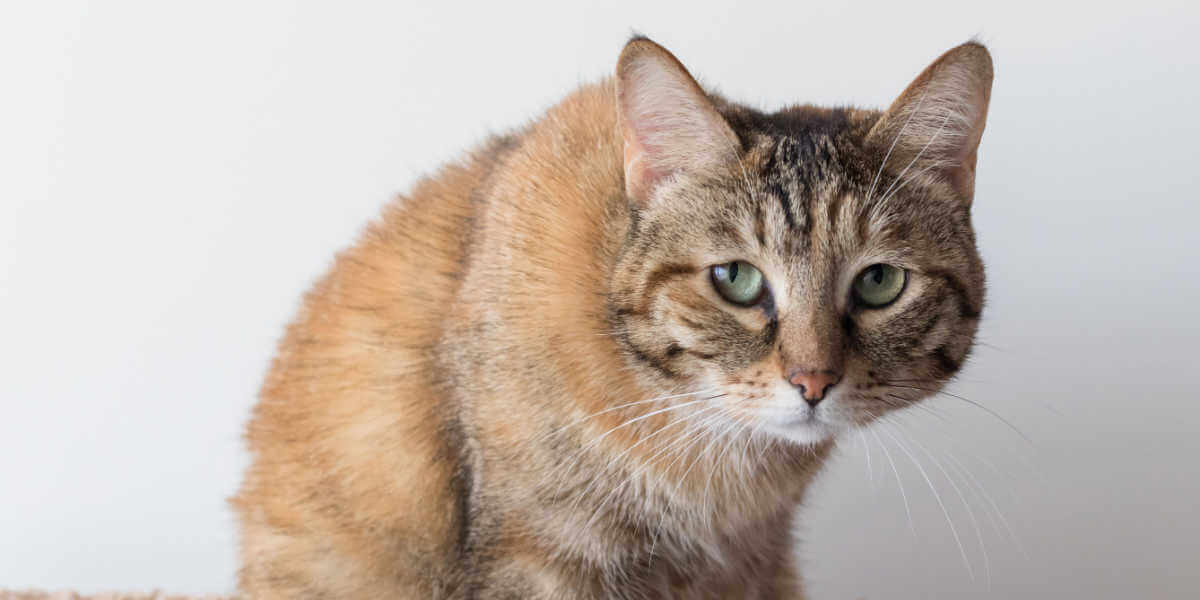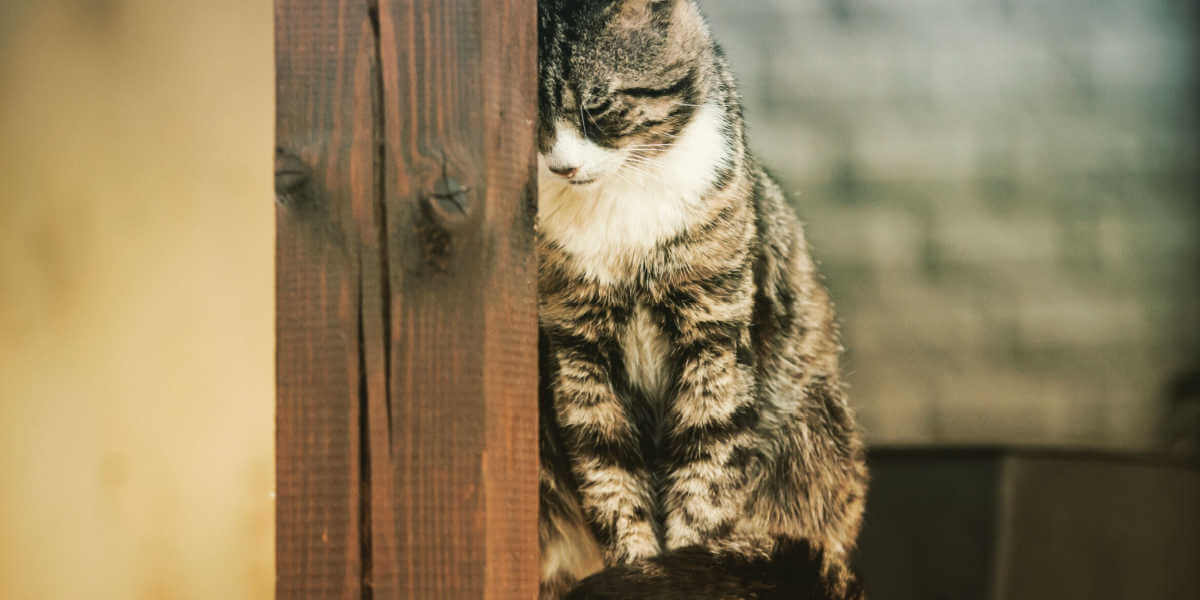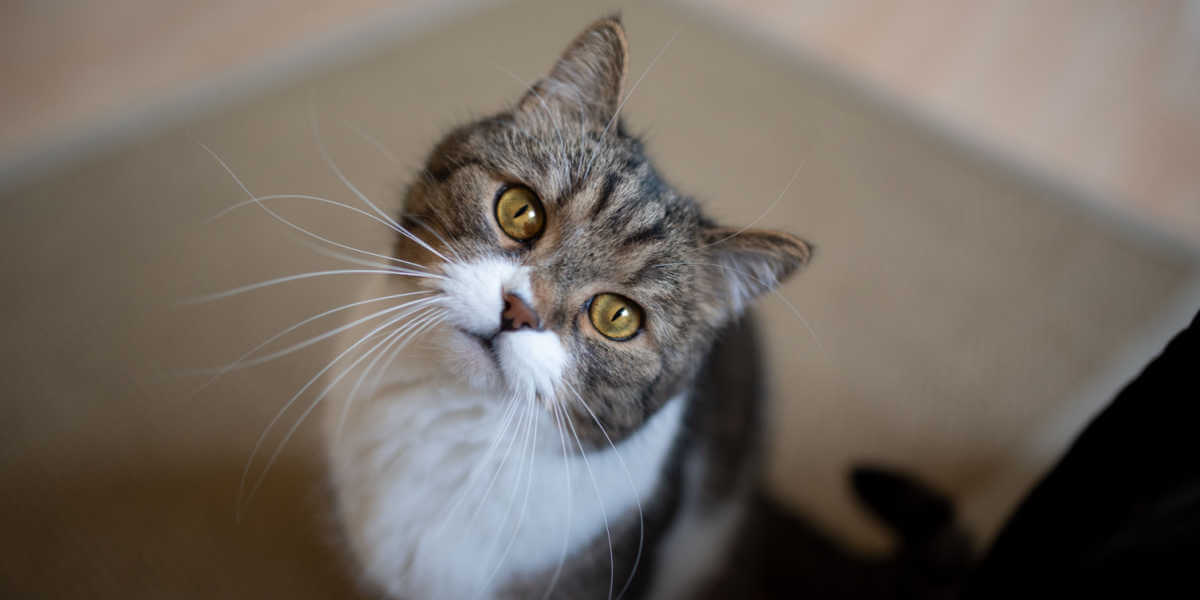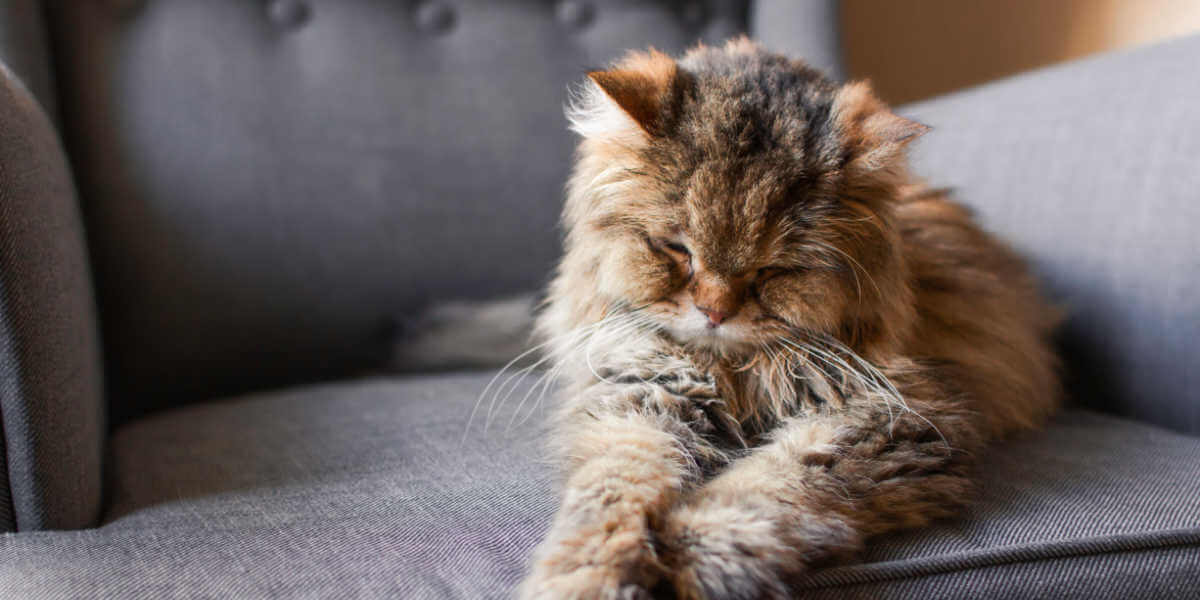
From problems with balance and difficulty walking, to tremors and seizures, problems with a cat’s nervous system can be scary. In this article, you’ll learn what parts of a cat’s body can be affected by neurological disease, 5 common neurological disorders in cats and their causes, and some frequently asked questions.
Also Read: 10 Most Dangerous Diseases In Cats
What Are Neurological Disorders in Cats?

Neurological disease affects the brain, spinal cord and nervous system and causes a range of symptoms.
A neurological disorder is something that affects the nerve conduction system of the body. This encompasses the brain and spinal cord primarily, but can also include nerves that interact with other parts of the body too, like muscles.
There are many different types of neurological disorders in cats with many different causes, affecting different parts of the body. Some disorders cause clinical signs and symptoms in more than one part of the body. This can also lead to two cats having the same neurologic disease showing very different signs of illness.
Also Read: 10 Fascinating Cat Brain Facts
5 Most Common Neurological Disorders in Cats
This article will cover five of the most common neurologic disorders in cats. Some are broader categories, with others being more specific. All of them may have more than one underlying cause.
Two cats affected by the same disease may have very different looking illnesses and two different disorders may cause the same signs of illness. Some diseases in cats may appear neurological, but instead have a different cause.
This article is intended to provide you with some general knowledge, but is not intended to aid in diagnosis of a particular condition. Diagnosis of neurological disease should always be the responsibility of your veterinarian.
1. Brain Tumors

Changes to behavior and mentation are common with brain tumors.
A brain tumor is a mass of abnormal tissue that develops within the cat’s brain. In many cases, this involves a cancerous growth stemming from one of the tissues of the brain itself. The most common type of cancerous brain tumor in cats is called a meningioma. A glioma is another type.
Brain growths can also be non-cancerous, in the case of inflammatory masses or parasitic infections.
Symptoms: Seizures are common, occurring when an abnormal signal gets amplified within the brain, causing hyperactivity. Events may include full seizures with loss of consciousness, convulsions, hypersalivation, urination and defecation. More subtle focal seizures, which can look like twitching or tremors while a cat is still awake, may also be seen. Changes in a cat’s mental state and behavior can be common as well.
Diagnosis: A veterinarian may presume a brain tumor is present if seizures appear to be present, especially in an older cat. While a brain tumor could be seen at any age, there is a higher risk for cats older than 10 years. Accurately diagnosing a brain tumor requires imaging with magnetic resonance imaging (MRI). X-rays are of poor use to evaluate the brain and many cats will have no abnormalities with bloodwork. These diagnostic tests can be useful however, to rule out other causes of disease.
Treatment: Treatment will depend on the signs of illness being seen and the accuracy of diagnosis. The meningioma brain tumor in cats can be surgically removed. Gliomas can be as well, but are more difficult. These surgeries are typically performed by a veterinary surgeon or neurology specialist.
If the tumor cannot be removed, the symptoms can be managed. A cat with seizures can be managed on an anticonvulsant medication. Common ones include phenobarbital and levetiracetam (Keppra). Cats with behavioral changes may be prescribed antidepressant or anxiety medication like fluoxetine. Gabapentin may also be used for both behavior as well as for pain and it has mild anticonvulsant activity.
Prognosis: Cats can sometimes do favorably with medical management if they have a brain tumor, but there is always the concern that a tumor will continue to grow. Cats with meningiomas that are removed surgically can have a great long-term prognosis, as these brain tumors are more on the brain surface and can be removed more easily. Gliomas and other types of tumors that reside deeper in the brain have a less favorable prognosis and often require continued medical treatment.
Also Read: Alzheimer’s In Cats: Causes, Symptoms & Treatment
2. Idiopathic Epilepsy

Pawing or chewing at something which isn’t there is called ‘fly-biting’.
Epilepsy can be another cause of seizures in cats. The term “idiopathic” simply means that the specific cause for the seizures is unknown. Cats with idiopathic epilepsy are usually diagnosed at younger ages, between 6 months of age and 6 years of age. For a true diagnosis of idiopathic epilepsy, other causes of seizures like infections or brain tumors must be fully ruled out with lab work and MRI imaging.
Symptoms: As mentioned, seizures can include the classic appearance of convulsions, hypersalivation and loss of bodily functions. But focal seizures, which are more mild and occur while a cat is still conscious, can also be seen with epilepsy. Focal seizures can include facial or limb twitching, tremors, involuntary head shaking, or the action of pawing or chewing at something that is not visible. This last sign is termed “fly-biting”.
Diagnosis: To truly diagnose a seizure event, a device called an electroencephalogram (EEG) must be connected to record brain waves as the event happens. Unfortunately, this is often impractical since seizure events may occur without warning and cannot be predicted with accuracy. Additional testing to rule out other causes of seizures is often recommended. This includes MRI imaging of the brain, general blood work, and testing for infectious and parasitic diseases.
Treatment: True idiopathic epilepsy can only be treated with anticonvulsant medication. The two most common medications used include phenobarbital and levetiracetam (Keppra). These medications help to reduce the abnormal overactivity in the brain that leads to seizures. Even with medication, it can still be expected for a seizure event to occur a couple times a year and adjustment to doses may be needed over time.
Prognosis: The prognosis for idiopathic epilepsy in cats is typically good as long as more concerning causes of seizures have been ruled out and response to medical therapy is good. These cats can live a normal life span in most cases.
Also Read: Why Is My Cat Shaking & Shivering? (And How To Help)
3. Congenital Disorders

Congenital disorders often present very early in a cat’s life.
Congenital disorders are those that a cat either genetically inherits, or that develop very early while a kitten is still developing within the mother before birth. The most common ones in cats include hydrocephalus (an abnormal accumulation of cerebrospinal fluid around the brain) and cerebellar hypoplasia. The latter occurs when a cat is born with an abnormally small cerebellum. The most common cause of both hydrocephalus and cerebellar hypoplasia in cats is early infection with the feline distemper virus, also called feline panleukopenia virus.
Symptoms: Cats with hydrocephalus can have a variety of signs, depending on how severe the fluid pressure inside the skull is. Signs may include mental dullness, difficulty with housetraining, and seizures. The shape of the skull and eye position may appear abnormal. A kitten may have coordination and balance issues.
Because only one part of the brain is affected, cats with cerebellar hypoplasia will commonly only exhibit abnormalities in their coordination of movements. A hypermetric or “goose-stepping” exaggerated gait is common. Intention tremors, which describe exaggerated movements during attempts on focused motions like eating, drinking, or playing with a toy, are also common.
Diagnosis: Both of these conditions may be highly suspected by a vet based on a physical examination, the young age of the cat, and descriptions of what a pet parent is seeing at home. Diagnosis can be confirmed with CT or MRI imaging.
Treatment: Hydrocephalus can be difficult to treat. Cases where a cat is only mildly affected may not require treatment. If enough fluid swelling is present to cause some abnormal signs from increased pressure inside the skull, oral medications including corticosteroids, may be used to reduce the swelling. In severe cases or ones that don’t respond well to medical management, a permanent shunt may be placed surgically to allow the excess fluid inside the head to drain.
For cerebellar hypoplasia cats, there is no treatment, as the loss of the cerebellum has already occurred. This is not a progressive condition, however, and most cats can adapt to their disabilities.
Both diseases are caused by feline panleukopenia virus, which is one component of the FVRCP or “feline distemper” vaccine. Vaccinating cats so that the virus cannot be passed on to kittens during pregnancy is the most effective way to prevent these conditions.
Prognosis: For hydrocephalus, the prognosis depends on the severity of signs and how much fluid swelling within the head is present. Cats that are mentally dull, blind, or have seizures may have a poor prognosis without surgical treatment. Cats with milder disease may be managed with medication. Although there is no treatment for cerebellar hypoplasia, these cats can adjust to their disabilities and live full lives with the right caretakers.
Also Read: Why Do Cats Bob Their Heads? A Veterinarian Explains
4. Vestibular Disease

A head tilt can be a sign of vestibular disease.
Vestibular disease refers to an issue with balance and coordination. This can occur either within the inner ear (which is called peripheral vestibular disease) or inside the brain (which is called central vestibular disease).
Symptoms: Cats with vestibular disease often have their head tilted to one side and have trouble standing and walking. They may tend to lean or walk to only one side, or walk in a circle, in the same direction as the head tilt. A sign called nystagmus, where the eyes repetitively move side to side or up and down involuntarily, is seen in most cases. Vestibular disease can cause nausea and poor appetite.
Diagnosis: Vestibular disease can have several causes. In a very young cat or kitten, feline infectious peritonitis (FIP) virus is a common cause. Other causes include inner ear infections, infections that penetrate the inner ear and affect the brain, and brain tumors. In some cases, a cause is not found, in which case the vestibular disease is termed “idiopathic”.
A vet can initially test for an ear infection with ear swab samples. If inner ear involvement is suspected, skull x-rays may be considered, but a CT scan provides better information. An MRI may be considered if there is concern for a brain tumor or infection. There is no specific test for FIP, but a vet may presume it to be the cause in a young kitten with vestibular disease along with other lab work findings.
Treatment: Inner ear infections can be treated but do sometimes require surgery in addition to antibiotics. Infections that reach the brain can also be treated if they are caught early enough. Treatment for a brain tumor or other cancerous cause may be limited but depends on the tumor type and location. Typically radiation and/or chemotherapy options are discussed. Treatment for FIP is still in the early stages and antiviral treatment is not readily available.
Prognosis: The prognosis for vestibular disease caused by an inner ear infection is good and may still be fair with a brain infection if caught early enough. Prognosis for disease caused by a tumor or other cancer is usually guarded to poor, especially in older cats. Although newer antiviral treatment trials are promising, FIP tends to progress rapidly and still carries a guarded to poor prognosis. Some cases of idiopathic vestibular disease, which tends to occur in older cats, may correct on their own in 2-3 days. In these cases, the prognosis is typically very good.
Also Read: Ataxia In Cats: Causes, Symptoms, And Treatment
5. Cognitive Dysfunction

Cognitive dysfunction can cause behavioral changes in older cats.
Cognitive dysfunction in cats, also sometimes referred to as “kitty dementia” can commonly be seen in older cats. Cognitive dysfunction is considered to be a degenerative age-related condition. These cats typically exceed 10 years of age and most often are closer to 15 years of age or older.
Symptoms: Signs can vary, but may include disorientation, wandering without apparent point or purpose, lack of interest in play or toys, staring for long periods at nothing in particular, urination and defecation outside the litter box, and sudden periods of loud vocalizing, often at night.
Diagnosis: Cognitive dysfunction is a diagnosis of exclusion, meaning that other diseases must be ruled out first. This often includes lab work to rule out liver disease, kidney disease, hyperthyroidism, and high blood pressure, and may go as far as an MRI to rule out a brain tumor or other primary neurologic disease.
Treatment: There is no approved treatment for cats, but a drug approved for dogs called selegiline may be considered. Feeding diets high in Vitamin E and other antioxidants may help slow the aging process and can be considered for older cats.
Maintaining a stimulating environment can also help. For cats with cognitive dysfunction, it is important to keep litter box access easy, with at least one extra box per cat in the home. Avoid making changes to the home environment that may lead to confusion.
Prognosis: Cognitive dysfunction itself is not considered a terminal illness, but can lead to frustrations and difficulties with care at home. Many cats with cognitive dysfunction, since they are typically elderly, have other illnesses or ailments that also require attention.
Also Read: 9 Cat Behavior Changes To Worry About
Can Neurological Disorders in Cats Be Cured?

There is a very variable prognosis for neurological disease in cats.
Unfortunately, there is no easy answer to this question, as neurological disease in cats can have many different causes, and affect different parts of the body in different ways.
Sometimes recovery is possible depending on the cause. Infectious disease, like toxoplasmosis or inner ear infections can be treated with medication if the signs are not too severe. Some infectious causes are not as responsive to treatment but there is promise of better options in the future with more research.
Some cases of neurological disease in cats cannot be cured but can be managed successfully. Cats with epilepsy can have their seizure disorder managed with medication and can still have a great quality of life. Cats with movement or balance issues from cerebellar hypoplasia can still live a full life in the right home with the right expectations and cats with cognitive dysfunction just need some extra TLC at home.
The most important thing with neurological disease in cats is to arrive at a diagnosis as much as possible. Some diseases can mimic neurologic disease but a veterinarian can often determine the difference initially with an exam. Arriving at a diagnosis from there may require more testing, but will help ensure that the treatment and other recommendations are the most accurate.
Also Read: 11 Signs That You Need to Get Your Cat To the Emergency Room
Frequently Asked Questions
How do I know if my cat has a neurological problem?
The best way to confirm that a neurological disorder is present is to have your cat evaluated by a veterinarian. There are many conditions that may mimic neurologic disease. For example, a cat may stumble or have trouble walking because of dehydration or weakness.
This can occur with many disorders, not just neurologic ones. Your vet will perform a neurologic exam to determine if neurologic dysfunction is present, or if another cause may be to blame.
What causes sudden neurological issues in cats?
There are various causes of sudden neurological issues in cats. Bacterial or viral infections, when they occur, can lead to a quick onset of illness. Trauma may result in neurologic changes if the brain or spinal cord are affected.
Parasitic infections, like toxoplasmosis, can occur quickly. Some cats may harbor a parasite like toxoplasmosis for many years without signs of illness until the immune system is affected for some other reason, allowing the parasite to recur.
Chronic illnesses may also lead to an apparently sudden onset of neurologic signs. Brain lesions, like a brain tumor, may grow slowly over time. A cat’s body may tolerate the presence of a tumor or cancer until a certain threshold is reached. Once this threshold is passed and the body can no longer tolerate it, neurologic signs may occur.
What are the neurological signs of toxoplasmosis in cats?
Toxoplasmosis is caused by the protozoal parasite Toxoplasma gondii. In many cases, cats that have been infected by this parasite show no signs of illness at all, as their immune system keeps the parasite in check.
But if the immune system is weakened for some other reason, toxoplasmosis may develop. This could occur in both young and old cats. The most common signs of toxoplasmosis are fever, poor appetite, and lethargy.
Neurological signs can include abnormal pupil size and response to light stimulation, lack of balance and coordination, walking in circles, behavioral changes, difficulty chewing and swallowing, seizures, and loss of normal bladder and bowel function.
-
Brooks, Wendy. “Hydrocephalus (Water on the Brain) in Dogs and Cats”. Revised April 23, 2022. Accessed April 13, 2023.
https://veterinarypartner.vin.com/default.aspx?pid=19239&id=4952484
-
“Cognitive Dysfunction”. Cornell Feline Health Center. Accessed April 13, 2023.
https://www.vet.cornell.edu/departments-centers-and-institutes/cornell-feline-health-center/health-information/feline-health-topics/cognitive-dysfunction
-
“Neurological Disorders”. Cornell Feline Health Center. Accessed April 13, 2023.
https://www.vet.cornell.edu/departments-centers-and-institutes/cornell-feline-health-center/health-information/feline-health-topics/neurological-disorders
-
“Toxoplasmosis in Cats”. Cornell Feline Health Center. Accessed April 13, 2023.
https://www.vet.cornell.edu/departments-centers-and-institutes/cornell-feline-health-center/health-information/feline-health-topics/toxoplasmosis-cats








There is now a treatment for FIP.
Yes, there is! It has only very recently received FDA approval and is still in its earliest phases of clinical use. But based on its being around for several years prior to approval and being utilized in some circles, it does have a lot of promise. The approval did occur after this article was published, so I’ll amend the statement your’re referring to.
Can a kitten’s growth be stunted by stress or tooth problems? What could cause that to happen?
Thanks
Hello there! I’ve not heard of stress or tooth problems stunting a kitten’s growth. If you feel your kitten’s growth is stunted, you may need to talk with your vet to figure out what’s going on. Unless the kitten simply happens to be from a small breed, potential causes include starting life as a runt, malnutrition, or dwarfism. Hope all is well!
Hi Rebecca,
There are no specific tooth problems I can think of that commonly lead to poor growth. There are birth defects, like cleft palates, that can lead to issues however.
Stress can indirectly lead to problems, as stress can contribute to poor immune function and more susceptibility to disease. Stress may also be caused by sibling rivalry and decreased access to food and resources.
Some kittens may have low birthweights at the start. This may be related to competition among siblings in the womb or could have other medical causes. These kittens may have a little harder time gaining weight compared to their siblings.
Fading kitten syndrome, which has many underlying causes, can also be a cause of unthriftyness and poor weight gain in very young kittens. Most often, fading kitten syndrome is related to underlying disease, like viral disease or parasites that causes calorie loss, dehydration, poor appetite, etc.
I hope that’s some helpful info for you.